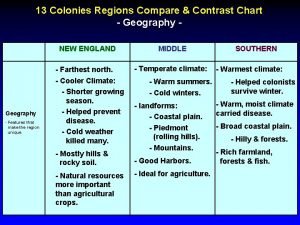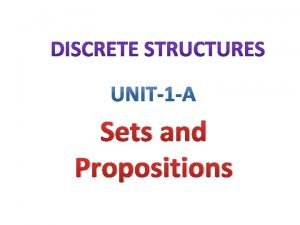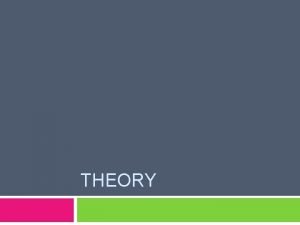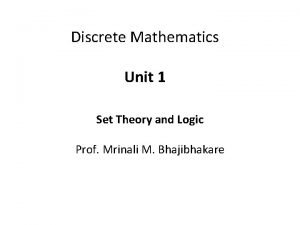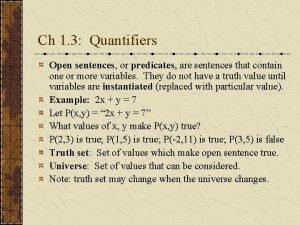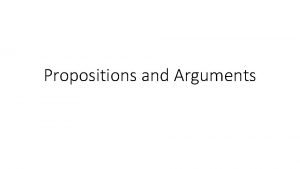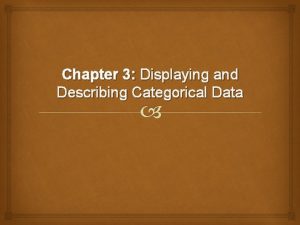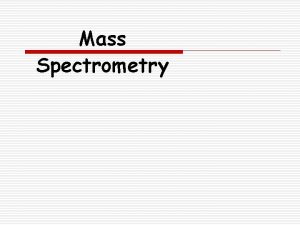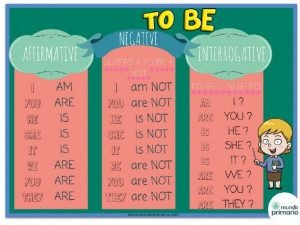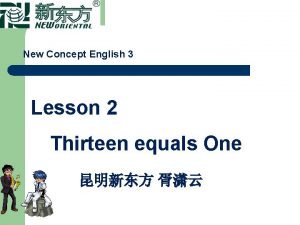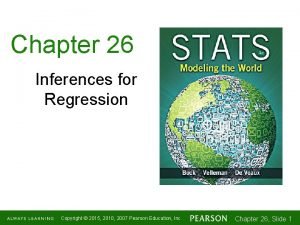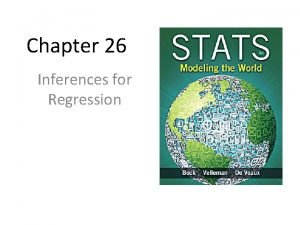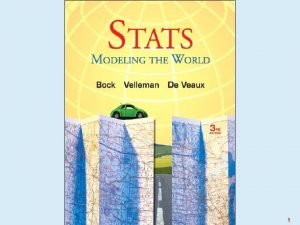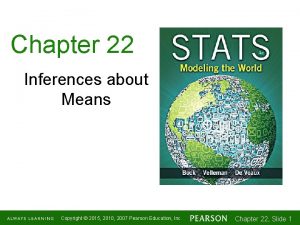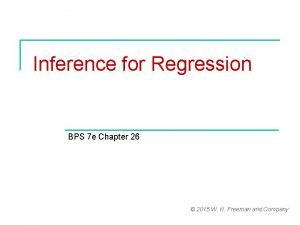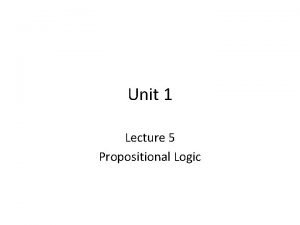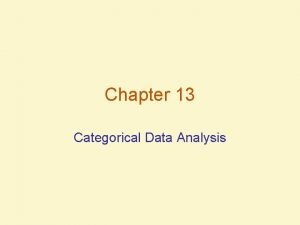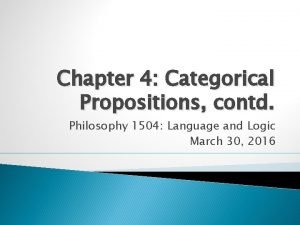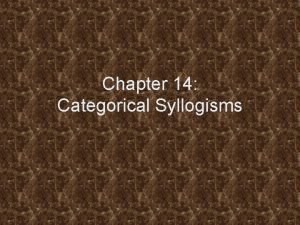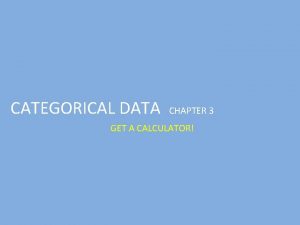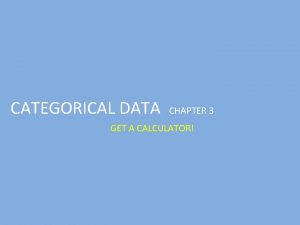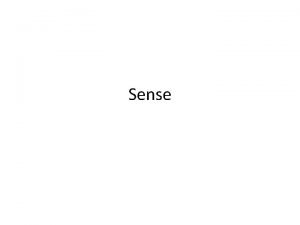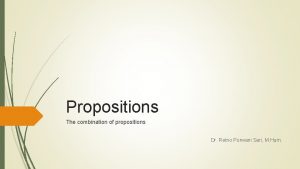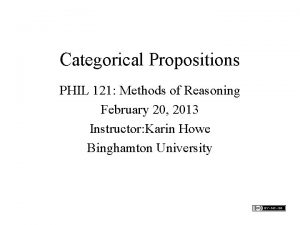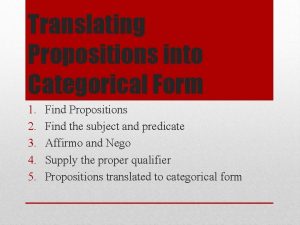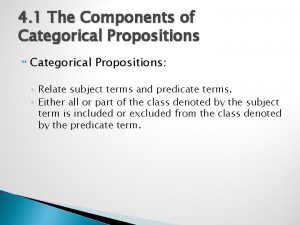Chapter Thirteen Categorical Propositions and Immediate Inferences Copyright


























- Slides: 26

Chapter Thirteen Categorical Propositions and Immediate Inferences Copyright © 2012 Pearson Education, Inc. All rights reserved.

Categorical Propositions • Categorical propositions are propositions that represent relations of inclusion or exclusion between classes of things. They are comprised of a subject and predicate. – Universal Affirmative: whole inclusion of one class inside another. – Universal Negative: mutual, total exclusion between two classes. – Particular Affirmative: partial inclusion, whereby part of one class is included inside another. – Particular Negative: partial exclusion, whereby part of one class is wholly excluded from another. Copyright © 2012 Pearson Education, Inc. All rights reserved.

Standard Categorical Propositions Copyright © 2012 Pearson Education, Inc. All rights reserved.

Class Relations in Categorical Propositions In (A), the entire class of Ss is included inside the class of Ps. In (E) the classes of Ss and Ps wholly exclude each other. In (I), part of the class of Ss is included in the class of Ps. In (O), part of the class of Ss is wholly excluded from the class of Ps. • Note: any standard-form categorical proposition has: – a quantity (it is either universal or particular) – a quality (it is either affirmative or negative) – a subject term and a predicate term – a copula connecting those terms • • Copyright © 2012 Pearson Education, Inc. All rights reserved.

Guide to Venn Diagrams for Categorical Propositions • Venn diagrams are graphic representations of the relationships between the subject and predicate terms of a categorical proposition. • For universal propositions, shaded-out areas signify classes with no members. • For particular propositions, an ‘x’ signifies where there is at least one member. Copyright © 2012 Pearson Education, Inc. All rights reserved.

Guide to Venn Diagrams for Categorical Propositions (cont’d) • The areas displayed by a Venn diagram relevant to representing a categorical proposition are three: those inside each intersecting circle and their intersection itself. • A Venn diagram for an A or E proposition shows a shaded area where there are no members. No ‘x’ occurs in this diagram. • A Venn diagram for an I or O proposition shows an ‘x’ in the area where there are members. No area is shaded in this diagram. Copyright © 2012 Pearson Education, Inc. All rights reserved.

Venn Diagrams for Standard Categorical Propositions Copyright © 2012 Pearson Education, Inc. All rights reserved.

Universal Affirmative Proposition Copyright © 2012 Pearson Education, Inc. All rights reserved.

Universal Negative Proposition Copyright © 2012 Pearson Education, Inc. All rights reserved.

Particular Affirmative Proposition Copyright © 2012 Pearson Education, Inc. All rights reserved.

Particular Negative Proposition Copyright © 2012 Pearson Education, Inc. All rights reserved.

The Traditional Square of Opposition Copyright © 2012 Pearson Education, Inc. All rights reserved.

Contradictions • Holds between A and O, and E and I. • Contradictory propositions cannot have the same truth value; if one is true, then the other must be false, and vice versa. • For example, if (1) is true, (2) is false: – (1) All philosophers are wise persons. – (2) Some philosophers are not wise persons. Copyright © 2012 Pearson Education, Inc. All rights reserved.

Contrariety • Holds between A and E. • Contrary propositions cannot both be true at once, but both can be false. • For example, if (1) is true we can infer that (2) is false. But, both (1) and (2) could be false. – (1) All bankers are cautious investors. – (2) No bankers are cautious investors. Copyright © 2012 Pearson Education, Inc. All rights reserved.

Subcontrariety • Holds between I and O. • Subcontrary propositions cannot both be false at once, but both can be true. • For example, if (1) is false, then (2) is true. But both (1) and (2) cannot be false. – (1) Some students are vegetarians. – (2) Some students are not vegetarians. Copyright © 2012 Pearson Education, Inc. All rights reserved.

Subalternation • It holds between A and I, and between E and O. • From A to I and E to O: if the superaltern is true, then its subaltern is true. If the superaltern is false, then its subaltern is undetermined. • From I to A and O to E: if the subaltern is true, then its superaltern is undetermined. If the subaltern is false, then its superaltern is false. Copyright © 2012 Pearson Education, Inc. All rights reserved.

Truth-Value Rules and the Traditional Square of Opposition Copyright © 2012 Pearson Education, Inc. All rights reserved.

Inferences Based Upon the Traditional Square of Opposition Copyright © 2012 Pearson Education, Inc. All rights reserved.

Modern Square of Opposition Copyright © 2012 Pearson Education, Inc. All rights reserved.

Conversion Copyright © 2012 Pearson Education, Inc. All rights reserved.

Equivalences and Non-Equivalences by Conversion Copyright © 2012 Pearson Education, Inc. All rights reserved.

Obversion Copyright © 2012 Pearson Education, Inc. All rights reserved.

Equivalences by Observation Copyright © 2012 Pearson Education, Inc. All rights reserved.

Contraposition Copyright © 2012 Pearson Education, Inc. All rights reserved.

A’s Equivalent and E’s Non-Equivalent Contrapositives Copyright © 2012 Pearson Education, Inc. All rights reserved.

I’s Equivalent and O’s Non-Equivalent Contrapositives Copyright © 2012 Pearson Education, Inc. All rights reserved.
 Components of categorical proposition
Components of categorical proposition Comparing and contrasting the 13 colonies
Comparing and contrasting the 13 colonies Sets and propositions
Sets and propositions A set of interrelated concepts definitions and propositions
A set of interrelated concepts definitions and propositions Sets and propositions in discrete mathematics
Sets and propositions in discrete mathematics Ch q
Ch q Propositions and arguments
Propositions and arguments Categorical data displays
Categorical data displays Original thirteen colonies
Original thirteen colonies Eleven twelve thirteen fourteen fifteen
Eleven twelve thirteen fourteen fifteen 13 ways of seeing nature in la
13 ways of seeing nature in la Rule of thirteen mass spectrometry
Rule of thirteen mass spectrometry Freddy the thirteen
Freddy the thirteen 13 colonies quizlet
13 colonies quizlet How many dogs do you see
How many dogs do you see Fifty nifty united states from thirteen original colonies
Fifty nifty united states from thirteen original colonies Brainpop roanoke
Brainpop roanoke The 13 apostles
The 13 apostles New concept english 3
New concept english 3 Chapter 26 inferences for regression
Chapter 26 inferences for regression Chapter 26 inferences for regression
Chapter 26 inferences for regression Chapter 27 inferences for regression
Chapter 27 inferences for regression Chapter 22 inferences about means
Chapter 22 inferences about means Chapter 26 inferences for regression
Chapter 26 inferences for regression Examples of propositions
Examples of propositions Who is carl rogers
Who is carl rogers Fuzzy propositions
Fuzzy propositions

